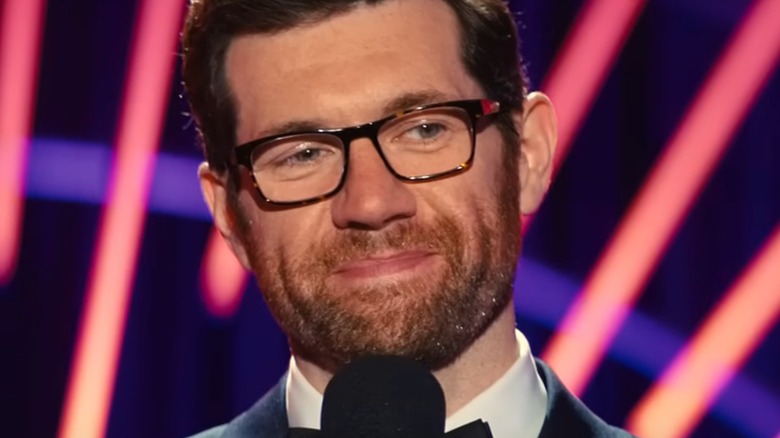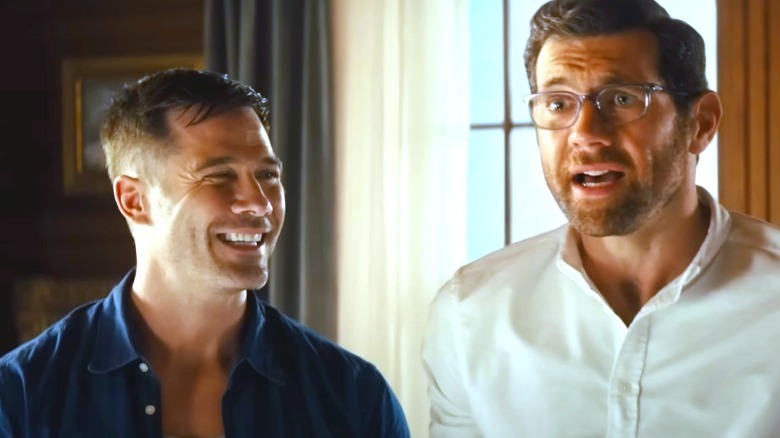How The Crew Of Bros Brought One Of The Movie's Most Important Sets To Life
For decades, many influential LGBTQ+ movies have flourished with striking and deeply felt stories that have explored a wide range of themes. There have been very few mainstream movies in this field, and practically zero romantic comedies, 2018's "Love, Simon" being an exception. But all of this changed with "Bros," in which lead actor Billy Eichner co-wrote the screenplay with director Nicholas Stoller. The movie explores the ups and downs of the relationship between Bobby (Eichner) and his partner Aaron (Luke Macfarlane) as well as their friends and co-workers. What sets "Bros" apart from typical sitcom fare, minus a hilarious appearance from "Will & Grace's" Debra Messing appearing as herself, is the absurdist humor you would typically expect to find in a Judd Apatow flick — indeed, he is among the film's producers.
This has certainly paid off in the reception it has received, with 90% and 91% ratings respectively from both critics and audiences alike on Rotten Tomatoes. From a technical perspective, the movie also takes advantage of its large budget with a production design that brilliantly captures Manhattan and surrounding locales. One of these sets is truly a marvel to behold thanks to its attention to detail, and the people behind its creation have spoken about how they envisioned and created this important set.
The crew of Bros strove for realism and historical accuracy when constructing the movie's LGBTQ museum
Long before "Bros" made history as a gay-themed rom-com, its production unfolded on a large scale. In the film, Bobby works as a podcast host before accepting a job to curate a brand new National LGBTQ+ History Museum in New York City. Speaking to Variety about the idea for the museum, director Nicholas Stoller commented, "The museum needed to feel like a real museum. It becomes ridiculous in the end, but the exhibits needed to feel real. Our location manager and [production manager Lisa Myers] found the Newark Museum of Art, so we used that for the front of the building and for almost all the museum spaces inside. At the very end when they walk down the street, that's Central Park West." He then added how supportive the museum was in allowing the crew to construct the magnificent display we see in the film.
Once the set was found, the ideas surrounding the content of the museum would primarily fall to Myers. In the same interview, she shared, "We had four historians working with us so that in the museum, even all the little blurbs are accurate and real. It just didn't feel right to have Lorem Ipsum when you're representing all of these amazing historical figures in a world where notoriously queer histories are erased." She then highlighted the space the crew was afforded to transform the vast gallery and make it as authentic-looking as possible.

